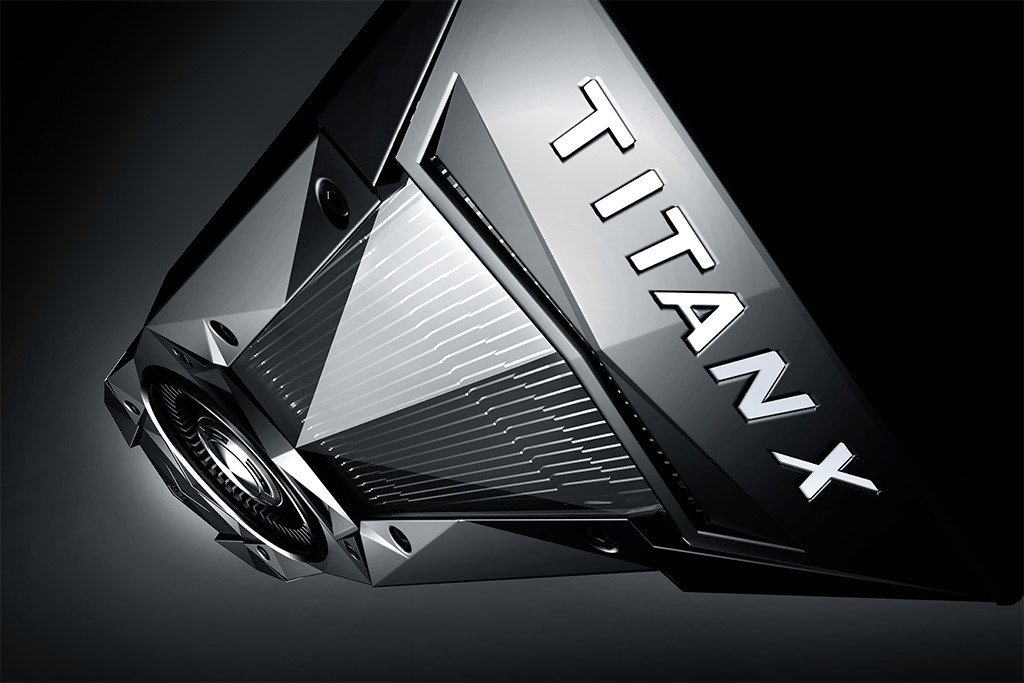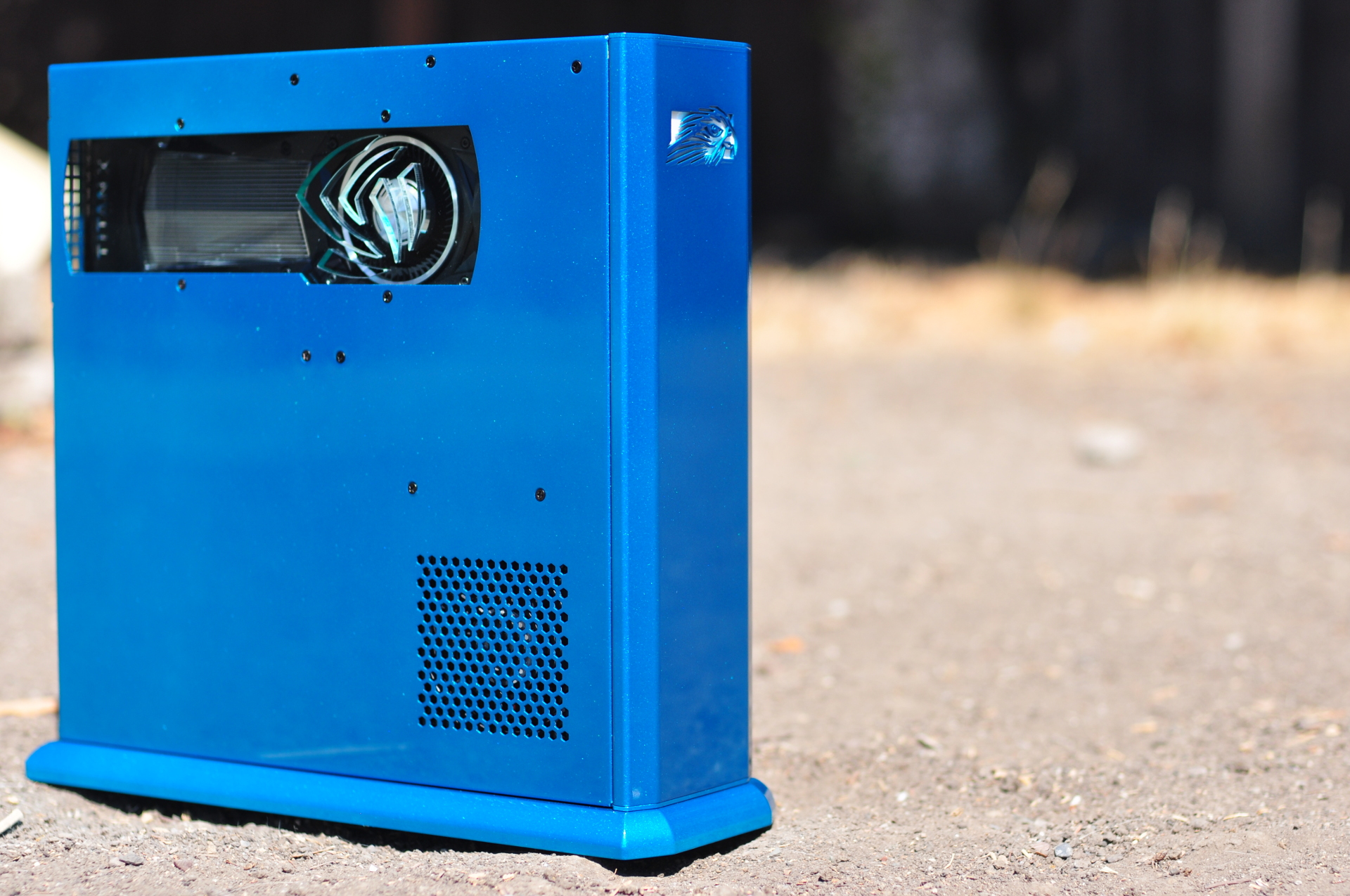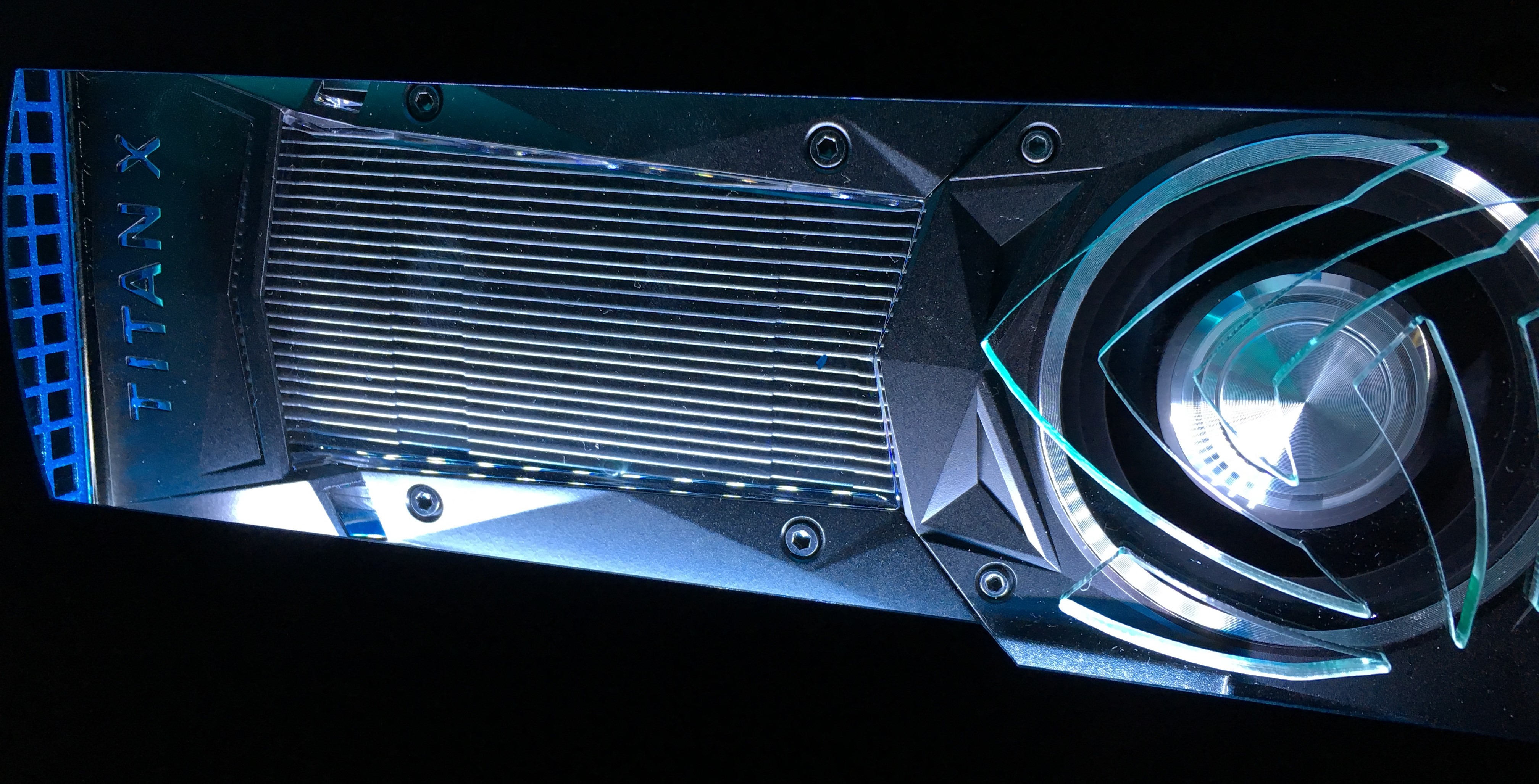Nvidia Pascal Titan X preview
This Pascal is for prosumers and enthusiasts.

To tell you the truth, we’ve been waiting for this. Nvidia’s lineup of consumer Pascal video cards has been impressive, to say the least. The GTX 1080 blew our hair back, and the 1070 delivers amazing power for its price. But the granddaddy of Nvidia cards, the Titan X, launches today, and you can color us excited.
Before I get ahead of myself, let me get one thing straight: Nvidia is not marketing the Titan X as a gaming card. Heck, the company isn’t even giving it the GTX designator (though the card still has "GEFORCE GTX" emblazoned on its side in green). Instead, the Titan X is being sold for “deep learning, AI, and pro-vis.” If that’s not clear enough, it means that the Titan X is primarily built for crunching numbers, not necessarily pushing pixels.
Think of the Titan X as a cheap workstation card. Sure, a card that will cost $1,200 a pop may not sound cheap to you and me. But compared to the Maxwell-based 12GB Quadro M6000 that runs about $3,300 on Amazon, the Titan X is a much cheaper compute card.

Specification recap
Nvidia first announced the Titan X’s specs on July 21, with a snazzy video to boot. The blog post noted that the Titan X would have an insane number of compute units, which is true. With 3,584 CUDA cores and 12GB of GDDR5X memory.
Nvidia says that the Titan X is capable of 11 TFLOPS. Compare that with the GTX 1080’s 9 TFLOPS, or the GTX 1070’s 6.5.
Like the GTX 1080 and 1070, the Titan X runs on the awesomely powerful and efficient Pascal architecture. Like the Maxwell Titan X, the Pascal Titan will pull 250W of power with an 8-pin and 6-pin connector. But the Pascal is giving you a lot more bang for the buck.
The Pascal Titan X offers over 500 more CUDA cores than the Maxwell model, and 1,024 more than the GTX 1080 can offer. The Titan X also prioritizes memory bandwidth, offering a 384-bit wide bus that offers up 480GB/sec of bandwidth. The GTX 1080 has a 256-bit wide bus and a throughput of 320GB/s. However, the clocks are where we see the GTX 1080 pull ahead.
The biggest gaming news, reviews and hardware deals
Keep up to date with the most important stories and the best deals, as picked by the PC Gamer team.
While the GTX 1080's has a base clock of 1,607MHz and a boost clock of 1,733MHz, the new Titan X is notably slower at 1,417MHz and 1,531MHz. You read that right: at factory clocks, the Titan X's boost clock still falls below the 1080's base.
Like the Titan X of Maxwell fame, the new Titan X comes in a 10.5-inch blower configuration.

Initial benchmarks
I got a chance to preview the new card yesterday while benchmarking Falcon Northwest’s new Tiki. This teal beauty fits neatly on a desk (or in this case on top of my ATX mid-tower PC), but packs a serious punch with its combination of the Titan X and Intel Core i7-6700K.
The Tiki shipped with the latest Nvidia GeForce driver (368.98), which allows the Titan to run. I first ran the benchmarks with that driver, and got mixed results. Nvidia released a GeForce driver with Titan X support Tuesday morning, so I had a chance to re-test the system with the new software. I didn't notice huge changes, but Titan X support in software is still getting off the starting blocks. I anticipate small advances in performance as drivers for the card mature.
I ran the Tiki through our standard battery for system tests: 3DMark Fire Strike, Far Cry: Primal (1080p with ultra settings), Rise of the Tomb Raider (1080p with very high settings and SMAA), and Tom Clancy’s The Division (1080p with ultra settings). I also tested these games at 1440p and 4K to try and put the Titan through its paces.
The Tiki lit up at 123 fps in Far Cry: Primal, which is one of the more impressive numbers. In comparison, the GTX 1080 scored an average of 93.6 fps in Jarred’s review of the GTX 1080 on his rig running an i7-5930K. Running the Tiki at 1440p and 4K saw scores of 89 fps and 49 fps respectively. The GTX 1080 managed 75.7 fps and 41.8 fps. From these numbers the Tiki is seeing improvements of 31.2 percent at 1080p, 17.6 percent at 1440p, and 17.2 percent at 4k over the GTX 1080's scores.
I’m also reviewing the Origin Chronos for Maximum PC, which scored 110 fps at 1080p with its GTX 1080 and i7-6950X. In my tests, Far Cry didn’t like SLI and only produced 86 fps on Digital Storm’s Aventum 3 that sports two GTX 1080s in SLI and an i7-6950X.
Rise of the Tomb Raider saw a big jump too. The Tiki illuminated a lag-free path for Lara, managing 136.1 fps at 1080p. Jarred’s rig managed 103 fps with the 1080, while the Chronos and Aventum 3 rendered at 137.3 and 116.7 fps respectively. In the 1440p and 4k tests, the Tiki produced 95.3 fps and 56.2 fps respectively. The GTX 1080 saw 72.3 fps and 50.1 fps. That means for RotTR, the Titan X rose up 32.1 percent at 1080p, 31.2 percent at 1440p, and 12.2 percent at 4k.
I was also curious to see what the Titan X could do with DirectX 12, so I ticked the box and ran the tests again. With the exception of 1080p, the frame rates were nearly the same: 143.1 fps at 1080p (a 7 fps improvement), 97.9 at 1440p, and 50.6 fps at 4k.
In Tom Clancy’s The Division, the Tiki went cleaner-mode on the Green Poison, burning at 110.9 fps. Jarred’s 1080 review hit the 95.5 fps mark, while the Chronos marked time at 104.2 fps. The Aventum 3’s SLI setup cranked out 163.3 fps while rendering the streets of Brooklyn. At 1440p, the Tiki fired at 79.8 fps, and 46.7 fps at 4k. Compared with the numbers from the GTX 1080 review, that's an improvement of 16.1 percent at 1080p, 15.7 percent at 1440p, and a statistically insignificant change (-1.5 percent) at 4k.

In our system reviews, we also like to test on 3DMark’s Fire Strike, since it scales well with SLI. The Tiki scored 19,819 in Fire Strike, with its Titan X and i7-6700K. The Chronos managed 19,813 while the Aventum 3 powered through with 26,853.
These numbers are all over the map with respect to the Chronos and Aventum 3 systems, but that’s to be expected. The GTX 1080 review was published on May 17, just 11 days after the launch date. Since then, Nvidia has released drivers that improved performance in a number of games. That said, these initial results are showing up to a 31 percent improvement in performance at 1080p, and as a little as no change at 4k, depending on the game.
The biggest boost I'm seeing so far is in the 1080p category, which begs the question: Who's the gamer paying $1,200 for a GPU just to play at 1080p? (I suppose it's the person who really wants max out that 144Hz monitor.) Not many gamers fit that description, and from what I'm hearing from Nvidia, that's okay. The Titan X isn't made for the everyday gamer.
It’s too early for a full review of the Titan X since we haven't done an apples-to-apples comparison yet. We will be publishing a full review for the Titan X in the coming weeks, so stay tuned for more in-depth testing and analysis.



